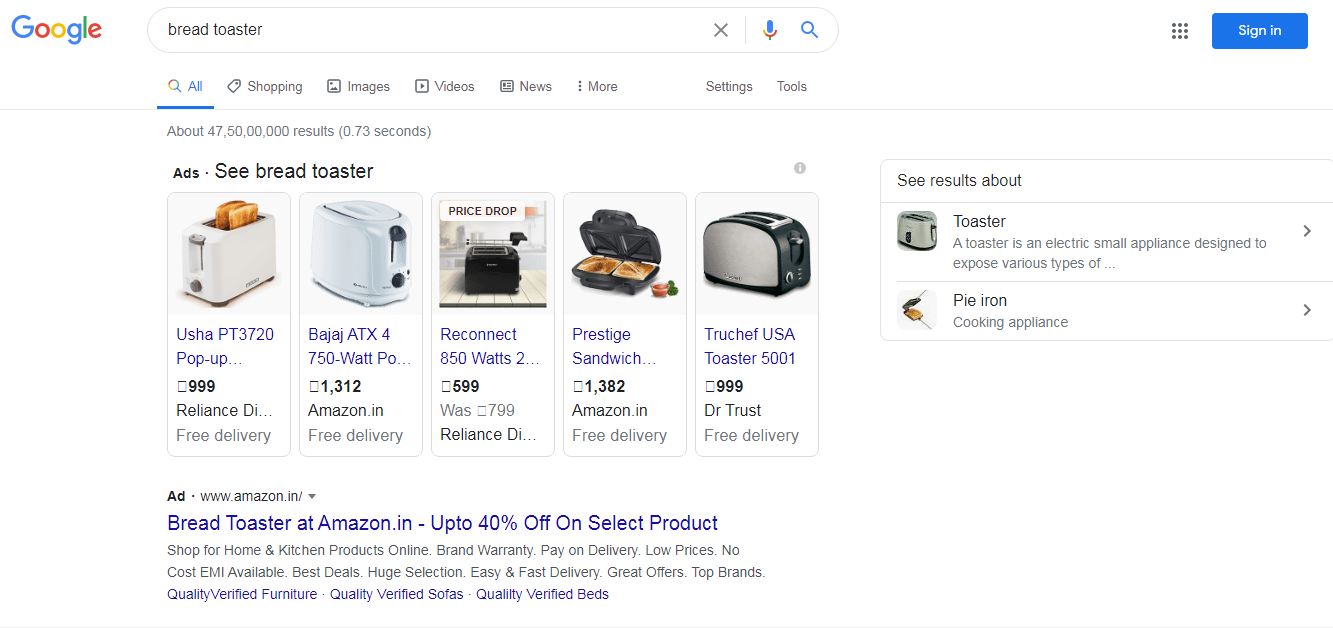views

What is "Searcher Intent" and How to Match It?
Keywords are the building blocks of any digital marketing and SEO strategy. After all, it is the best way to bring in a wider audience to your website. But are just finding good and high-ranking keywords enough? No, there’s more to it than finding popular keywords. You also need to look at the search intent of your audience.
But what does one mean by ‘searcher intent’? Let’s find about it.
Search intent is the reason behind any search. In short, it is ‘why’ people search for something. Do they want to buy something? Or get some information? Or simply visit a website? The question is ‘why’ will someone search for a specific term. And that’s what searcher intent is.
Let’s take an example of ‘house painting’ to understand this concept a bit more. If someone types ‘house painting’ in the Google search bar, what would they be looking for:
That’s why it is important to know and understand the intent of the person behind a specific keyword or term search. Without that, you may end up simply targeting the wrong keyword.
I have been talking about search intent and related keywords, but you would be thinking how exactly does that matter, right? Let’s take another example to understand this concept.
If someone is looking for living room table designs and searches ‘coffee table’, Google will provide them with related results. But if you are optimising for this keyword and offering information related to tables for a coffee machine, it won’t work. Why? Because Google is smart and has invested millions of dollars in understanding search intent to offer searches that are related to the term they enter.
So, how will Google know about it? If someone searches for a term and lands on your page but leaves the page immediately, Google will know that either the content is not up to the mark or not related to what the visitor was looking for. In short, the more the bounce rate, the less the relevance with the target keyword.
So, it is important to know what most people mean when they search for a particular term. Without understanding search intent, you may be simply targeting the wrong keyword or offering the wrong information.
But how will you find out? Is there any tool to tell you about the searcher’s intent? Unfortunately, there isn’t. But there is definitely a process to follow that can offer you a pretty good idea.
Before we jump into the process, let’s learn more about the intention or motivation behind searching for a keyword.
You can’t exactly know the reason behind a search, but at least you can categorise them into three broad categories. The three primary types of search intent are informational, navigational, and transactional.
These are the queries where people are looking to know more about something or gain knowledge. You can often see people using words like ‘how to’, ‘why’, ‘what’ or similar question-related keywords. But it isn’t always the case, people may also ask questions without forming a question (call them lazy or a unique talent).
Some examples of informational searches are:
These are the queries where people are looking for a specific website. In short, they already know where they want to go. But it easier and quicker to Google it rather than entering the company URL. Or sometimes just looking for the specific brand URL as they are unsure of it.
Some examples of navigational searches are:
These are the queries where people are specifically looking to buy a product or a service. In short, they are in buying mode and already know everything about the product. Now, they just want to find a place from where they can buy it. Most of the commercial keywords will fall under this category.
Some examples of navigational searches are:
You can also add one more category to these main three types (or at least experts do it) – commercial investigation. These are the queries where people are looking for more information related to a product. These can be comparisons or reviews. This is the step just before people intend to buy or before a transactional query. In short, this is the stage where people are still in the research stage but they have an intent to buy.
Now that you know about the search intent and the major types, how will you use search intent for SEO strategy? As I have said earlier, there isn’t a specific tool but you can follow a certain three steps process to find more about the keyword and the intent of searchers behind it.
Let’s start with finding a keyword that you think aligns with your niche and the topic you want to write about. And then,
Step 1: Examine and Explore SERPs
Google can help you understand the search intent behind any query (after all it has invested millions of dollars and years of hard work). So, use this information to the fullest. Some of the key areas to pay attention to the Search Engine Results Pages (SERPs) are:
Now that you have a keyword that you want to target. Let’s take an example of a ‘bread toaster’. When you search that term and look at the SERPs, it is clear that the intent behind this keyword is strongly commercial.
 Here, the paid ads box on the top shows product images from stores. In fact, the organic results also bring in webpages to the specific product page. That shows, people usually use this keyword for buying or perching the specific item and aren’t looking just for more information and images.
Here, the paid ads box on the top shows product images from stores. In fact, the organic results also bring in webpages to the specific product page. That shows, people usually use this keyword for buying or perching the specific item and aren’t looking just for more information and images.
But is relying on the recent one time result enough to know about the intent? As you know Google results are fluctuating. So, there’s a possibility of SERPs to change over time. This is where you can try using Ahrefs tool Keyword Explorer to check the history graph for that specific keyword.
Step 2: Align Your Content with Search Intent
Now that you know the clear search intent for SEO, the next step is to align your content according to it. The three basic things to target while looking for content are:
The type of content refers to the specific page while looking for any query. The four basic ones are:
For example, if someone searches ‘how to tie a knot’, the results will be all the blog posts. But if someone searches for ‘buy iPhone 12’, it will take to the specific product page. This is where content type plays a role.
This is where you need to look for the exact format that the people are looking for. Some of the most common are:
For example, let’s take the previous example of ‘how to tie a knot’, the result will be a step-by-step guide. But if the search is ‘best places to visit in monsoon’, the result will be about the top ten listicles type.
This is where you need to pitch the ideas or the USP of the product.
For example, in a search ‘how to tie a knot’, the results will show USP like:
Whereas in the search of ‘buy iPhone 12’, the result will show sales, best prices, new iPhone, etc.
This is where the content angle plays a role related to the search intent as they appeal to a specific audience.
Step 3: Take A Look at Top-ranking pages
The top-ranking pages are on the top for a reason. So, take tips to optimise for search intent from them. So, how can you do that? Here are a few ways to do that.
SEO is evolving and Google is getting smarter each day. So, don’t just stress on targeting best performing keywords, but rather look at the intent behind those. When you sit down to write down your next content piece, ask yourself what you hope to achieve by publishing this content. No matter if it is a blog post or product description page, are you and the audience thinking in the same direction? Figure out what people are looking for, and you are set to find more traffic and high rankings in the SERPs.

Don’t miss the read












